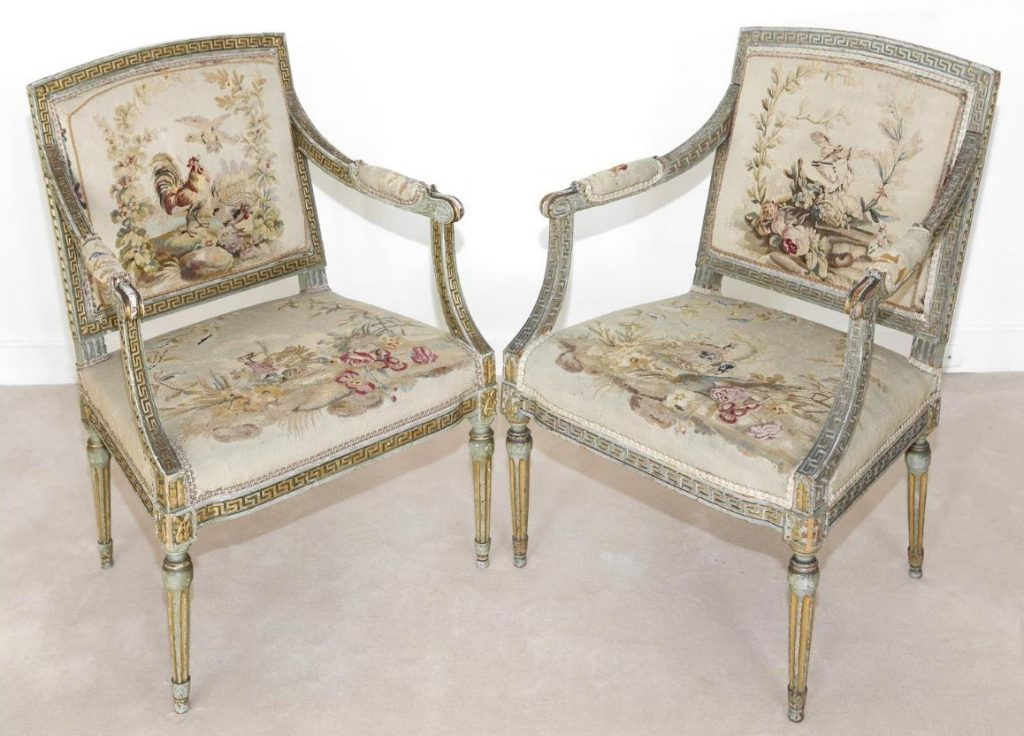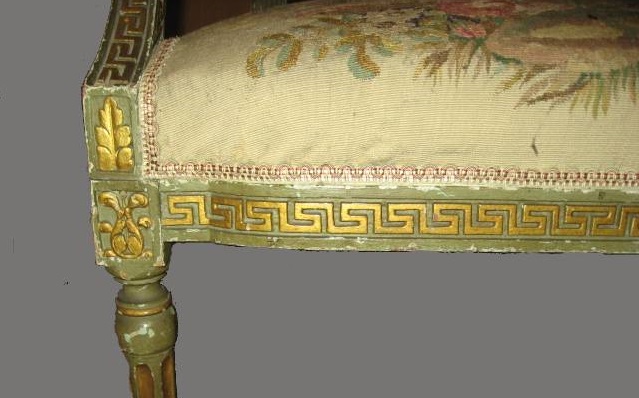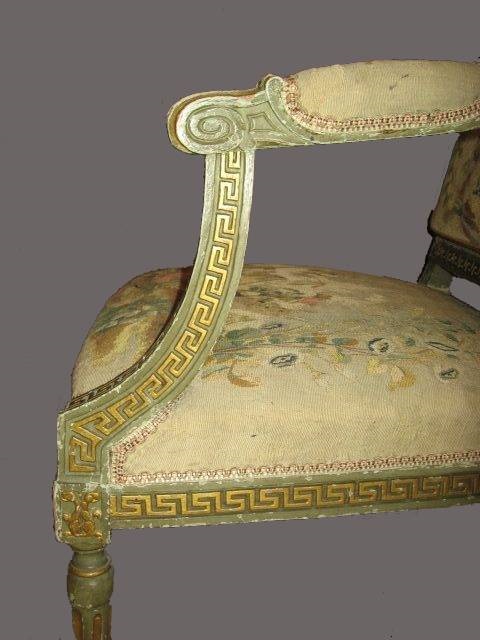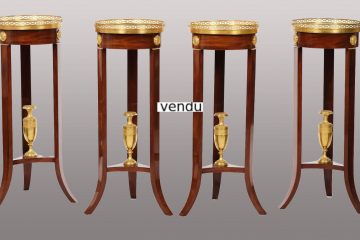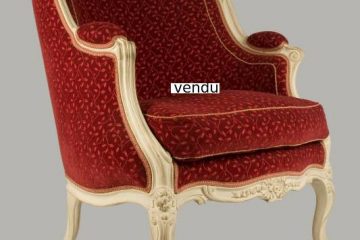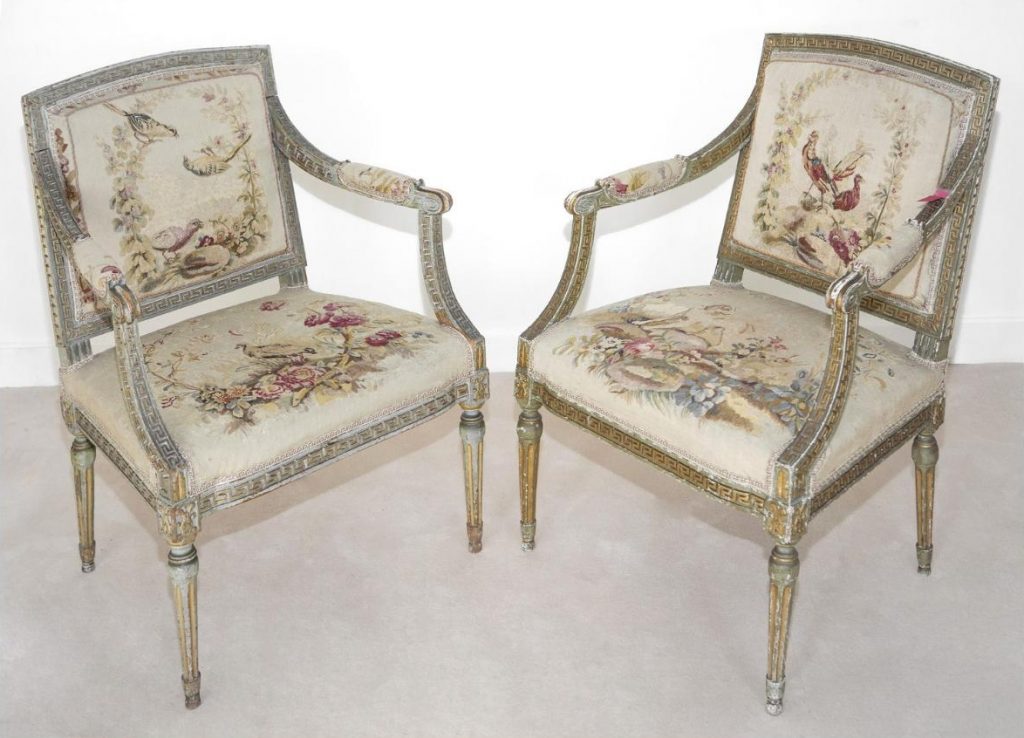
Suite de huit fauteuils à dossier plat en châtaignier mouluré, sculpté, relaqué gris vert et rechampi or à décor de frises de grecques et de feuillages, les pieds fuselés à cannelures. Travail étranger de la fin du XVIIIème siècle Garnis de belles tapisseries d’Aubusson à décor polychrome de volatiles.
Par son coup d’état d’août 1772, Gustave III était devenu Roi de Suède et regardait du côté de la France, comprenant que ce qui se passait dans son pays était proche des préoccupations françaises. Les gens d’esprit et les philosophes entretiennent avec lui une correspondance soutenue concernant les idées nouvelles à faire émerger.
Son attachement pour la France le pousse à venir à la Cour de Versailles en 1783-1784.
C’est au cours de ce voyage que les formes néo-classiques qu’il découvre, relayée par sa visite à Pompéi et Herculanum, vont investir les palais suédois.
Jean-Baptiste Masreliez sera même demandé par le souverain pour venir à Paris afin d’étudier et voir comment mettre en place ces nouveaux préceptes dans son pays. Masreliez, brillant sculpteur et ornemaniste n’était autre que le fils d’Adrien Masreliez, sculpteur et ornemaniste français arrivé à Stockholm en 1748.
Ce sculpteur de renom travailla beaucoup avec un fabricant de sièges du nom d’Eric Ohrmark.
Lorsque l’on étudie la production de ce fabricant de sièges on s’aperçoit que les formes françaises sont à l’honneur: les fauteuils à dos carré, les chaises en cabriolet, etc….
Les châteaux de Tullgarn, de Haga conservent des sièges dans cet esprit.

